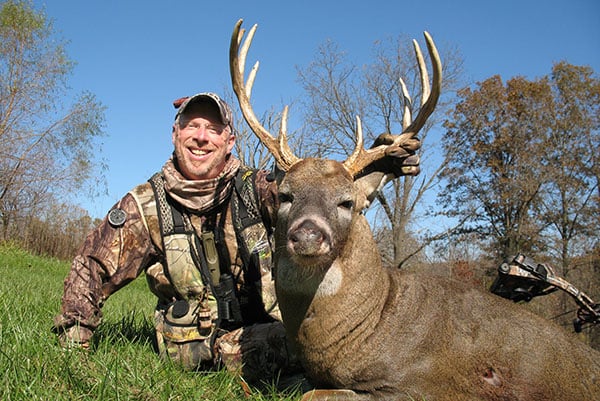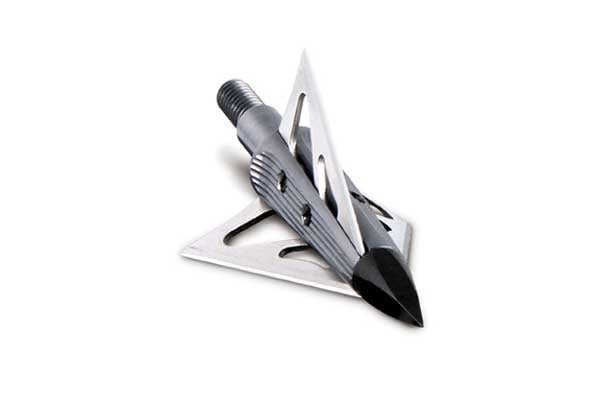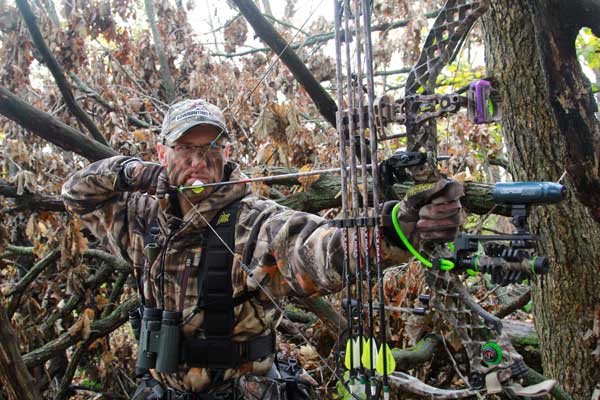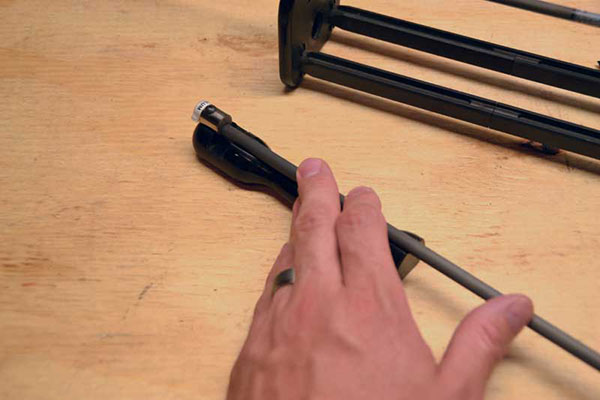LAST UPDATED: May 1st, 2015
Hands tremble. Legs shake. Knees knock. And it ain’t because your twenty feet up a tree either. It’s because you’re coming to full draw on the biggest buck of your life. And the last thing you want now is your arrow to miss its mark due to a bad “tune job.”
Getting a fixed-blade broadhead to fly straight can be like trying to get your great granny to use a smartphone correctly. It just doesn’t always work out like you want it to. That’s why we’re here to provide a few tips to aid in your efforts. On the tuning that is. Not your great granny’s iPhone.
Broadheads are less forgiving than field points. They are much quicker to magnify flaws and miscues in your setup. The key to having good-flying broadheads is having your complete setup in check. In order to have true aim takes effort. Here is where to focus yours.
A fixed-blade broadhead can have a mind of its own. But they will fly just as well as a field point with proper tuning. Photo courtesy of Muzzy Broadheads
Have the Right Tools
It’s important to have the right tools. Make sure you have a broadhead wrench. Furthermore, make sure you have the right broadhead wrench. Don’t rely on “finger torque” to get your broadheads right. Because, long story short, they won’t be right. Different broadheads demand different tools due to the blade pattern. The number of blades also plays in. Make sure the broadhead wrench you are using is a match to the broadheads you are shooting.
Make sure you get one if you don’t have the right wrench. Go to your local bow shop. Or get one online. Just make sure you have the right tools before you begin.
Have a Spine
A big part of good-flying broadheads has nothing at all to do with the broadhead. It has to do with the arrow instead. The amount of stiffness of the spine will affect the flight. The broadhead should be specifically matched to the stiffness of the spine. Too stiff or loose a spine will affect flight.
Use online guides to match the right spine to your bow. Then make sure you are using the right broadhead for the arrow you are shooting. You’ll thank yourself once you do.
Shoot the right arrows. Match the right arrow to your bow. Then match the right broadhead to your arrow. Photo by Josh Honeycutt
Be Square
As previously mentioned, the arrow is a huge factor in accuracy. It’s important to inspect the arrow before you ever put an insert or broadhead in it. Make sure the cut end of the arrow is square and free from bumps and ridges. Inserts will not seat themselves in the arrow correctly if the arrow itself is not mechanically sound.
Use a squaring tool to get your arrows right. It locks the arrow in place and then squares the end of the arrow by filing it down. It will allow inserts to seat into the arrow better. This will allow your broadheads to fly much truer.
Go with the Grain
It’s important to use the same grain field points when shooting. Different grain tips have different weights. This will affect flight. Dial in your bow as good as possible with field points. Then switch over to broadheads.
It’s also very important to use the same grain broadheads as field points. If you don’t it will alter your shot and cause you much more frustration. Getting broadheads to fly straight is hard enough without having to re-align your bow. Go with the same grain. Don’t ever mix and match.
Buy the Best
This is my advice for any type of gear. Buy the best you can afford. There are different grades of broadheads. Some companies make better products than others. It’s just that simple. Buy the best you can afford and shoot it to the best of your ability. As the old cliché goes, you’re only as strong as your weakest link. Don’t let that link be your broadheads.
Line ‘em Up
Make sure the blades and veins are lined up once the broadheads are on. If they aren’t, the flight of the arrow will be disrupted and out of sync. Turn the broadhead so that each blade is running the same line as each fletch. Being slightly off to the right or the left will drag your shot off its mark and leave you baffled with very poor results. Make sure you line them up and you will be much more satisfied with the performance of your broadheads.
Right the Rest
Your rest also plays a huge role in your arrow flight and broadhead production. The last thing you need is a rest that isn’t performing at its best. Change it if it isn’t exactly where it needs to be.
Your rest can be evaluated by paper tuning your bow. It will tell whether your rest needs to be shifted in a certain direction due to certain tears in the paper after an arrow is shot. Paper tune your bow to see if your rest is positioned correctly. If it isn’t, you won’t be satisfied with your shooting until it is.
Accuracy depends on a lot of things. Don’t let your broadheads hinder yours. Photo by Josh Honeycutt
Sharpen the Edge
This one is simple. Make sure your broadheads are sharp. Dull broadheads diminish penetration. But they also diminish accuracy. It may not be a huge factor. But it is still a factor nonetheless. Make sure you are shooting sharp broadheads in order to boost their effectiveness.
Use a Practice Head
The fastest way to dull a perfectly good head is to shoot it over and over at the range. Don’t do that. Use a practice head. Use this practice head on each of your arrows to make sure each is in good condition. Then place a new broadhead on the arrow before sticking it in your quiver. Shoot each broadhead once to make sure it flies well. But refrain from doing so more than once. This will only dull razor-sharp edges and keep your broadhead from flying and penetrating to the best of its ability.
Make sure the cut end of your arrow is square. If it’s not, and the insert isn’t seated properly, you won’t be satisfied with arrow flight. Photo courtesy of Wasp Archery
Don’t Do the Wobble
The last thing you need to do to make sure your broadheads are in tip-top shape is to test them. Make sure everything on the arrow is exactly as it should be. Then put the tip of the broadhead on a table and spin it. If it spins like a top, everything is as it should be. If it has even the slightest wobble, it’s back to the drawing board you go. An arrow that wobbles is an arrow that misses. Make sure you test each of your arrows before they ever make it to your quiver.
The best thing you can do for success is to prepare. Do your homework. Make sure you have everything in order. There are countless factors that play in to make a broadhead fly as it should. The things mentioned here are some of the biggest ones. Keep them in mind.
Opening day is just around the corner. Hunting seasons will soon start opening up across the country. And you’d best be prepared when they do. Whether you like chasing antelope, elk, whitetails or other species – give them respect by making sure your equipment is prepared to provide a quick-and-lethal death. Be humane and responsible. That all starts on the range by making sure your equipment is tuned and ready to take on the great outdoors. Good luck this season. Happy hunting.

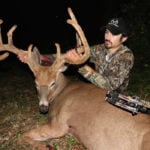 By
By 